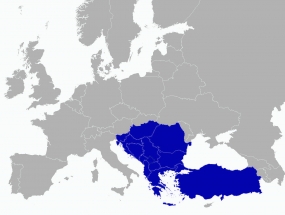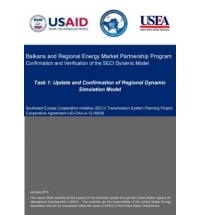Confirmation and Verification of the SECI Dynamic Model
client: USEA
type: Study (Transmission, Generation)
finishing date: September 2013 (January 2014)
team: Djordje Dobrijevic - Project Manager; N. Jovic, S. Mijailovic - Coordinator and Consultant
The main objective of this study is confirmation and verification of the regional dynamic simulation model (RDSM) of SEE power systems for expected development stage in 2015 and 2020. Constructed models should be adjusted with models for winter maximum regime as well as for summer minimum and maximum regime. This study should be performed in three phases:
- Phase 1: Update and confirmation of the RDSM – Within this phase recently developed RDSM should be rechecked and updated based on additional data from TSOs (simple questionnaire, dynamic models used in other software,…). The national dynamic model of Turkey should be integrated within the RDSM. At the end of this phase, each TSO should confirm its part of RDSM.
- Phase 2: Verification of the RDSM. The confirmed RDSM should be verified against selected recorded large disturbance. Based on the availability of the recordings, the consultant should propose a disturbance, in collaboration with the TSO members, which should be used for the verification. Based on the selected disturbance, each member TSO should send a snapshot model and the consultant should create merged model, simulate the event, and then do the comparison between the simulation results and the real event recordings. In case of mismatch, the consultant should make adequate proposals and corrections to the dynamic model, in collaboration with the corresponding TSOs, to establish an adequate match between simulation model and real system.
- Phase 3: Propose criteria for installation of WAMS – The consultant should provide general description of future WAMS as well as propose criteria for selection of the most suitable locations where PMUs should be installed, in order to achieve WAMS of regional significance, which can identify instabilities in power systems and evaluate the most effective measures against large area disturbances.
Type of services provided:
- Construction and merge of LF models
- Construction of dynamic models
- Load flow calculation
- Transient stability analysis
- Small signal stability analysis
- Mid-term stability analysis
- Checking of dynamic parameters
- Tuning of dynamic models
- Verification of dynamic models
- Development of WAMS installation criteria


